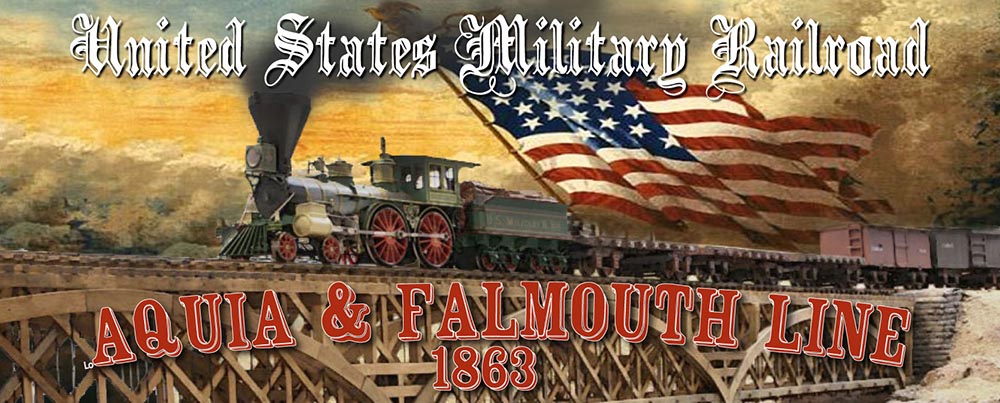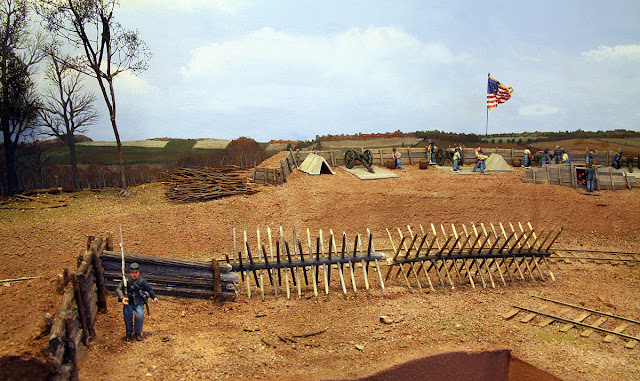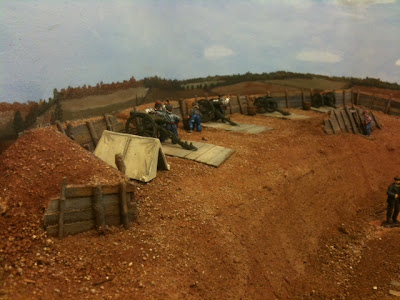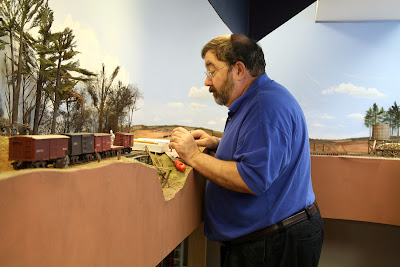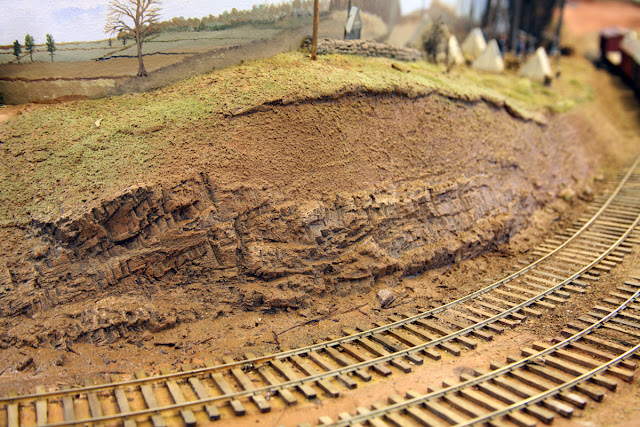 |
| 110th Pennsylvannia at Falmouth |
The photo of the 110th Pennsylvannia at Falmouth is the type of scene I'd like to show in the background of my Stoneman's Station where the scenery is deep and forced perspective will work with 28mm figures.
A graphic from the Gettysburg Visitor Center
showing how many soldiers actually
make up a regiment, brigade and division.
|
Also note the single tree. I have built an oak for this spot but the more I look at this tree, the more it looks like a pine. So I guess I'll move the oak to some other place and put a pine in this spot. The tall tree is an important compositional element as it helps frame my Falmouth scene.
Eventually I'd like to portray a full regiment, or even brigade, in formation somewhere on the layout. The graphic from the Gettysburg Visitor's Center shows an example of what I'd like to do. Usually in wargaming and in modeling the number of figures used in the display is some fraction of the actual number engaged, usually a ratio of 10 or 20 to 1. Thus a 400 man regiment might be portrayed by 20-40 figures. Showing a full regiment at 1 figure per real soldier might be illuminating to people used to seeing the selectively compressed number of soldiers usually depicted on a gaming table.
One time I was mass painting GHQ 10mm figures for a Johnny Reb Game. I had painted about 200 Union soldiers and before basing them on individual gaming stands, I arranged them in a single regimental formation. It was interesting to examine and compare. Talk about a thin blue line. Then consider a full strength regiment was about 1,000 men. That's a lot of people power.
 |
| Renegade Miniatures makes a nice line of soldiers marching, standing at attention, and at ease, |
I understand that Renegade is closing out the ACW line, so order them now. The Renegade figures are a bit taller and beefier than the Perry miniatures.
PS: Does anyone get the title reference?
